But although they’re found everywhere, not everyone knows just how they came to be. In fact, in the world of manufacturing there are eight different plastic forming methods.
Each is used for a special reason, although they can sometimes be used in combination to make more complex finished parts. Today, we will take a closer look at the top eight plastic processing methods and the applications they’re best suited for.

- Plastic Injection Molding
- Rotational (Roto) Molding
- Extrusion Blow Molding
- Injection Blow Molding
- Reaction Injection Molding (RIM)
- Vacuum casting
- Thermoforming
- Compression Molding
- What Materials Are Used In Plastic Manufacturing?
1. Plastic Injection Molding
What is plastic injection molding?
Plastic injection molding is a high-volume manufacturing method, where a liquid plastic resin is injected into the empty cavity of a forming die, taking on the shape of the interior surface. When this resin is cooled and solidified, the forming die opens, the finished part is ejected, and the process is repeated.
Plastic injection molding has proven itself to be a stable and reliable high-volume production method, accounting for more than 80% of the common plastic items we encounter every day.
What are the pros and cons?
The advantage of PIM is that millions of identical parts can be made quickly, with an excellent surface finish, and at a low cost. Molds however can be expensive and complex, depending on the part geometry. Careful engineering design of the mold is required to prevent defects and optimize part quality and processing speed.
2. Rotational (Roto) Molding
What is rotational molding?
Rotational molding also uses a mold tool, consisting of a core side and a cavity side. However, the manufacturing process is quite different from injection molding.
The plastic powder is first poured into the cavity of the mold, and then the mold is placed in an oven. While being heated, the mold is slowly rotated on two axes. Gravity is used to stick the plastic to the tool walls and build up the correct thickness.
Finally, the mold is removed from the oven and slowly cooled to prevent warpage. Full cooling can take several minutes, after which the tool is opened and the part removed for the next cycle.
What are the pros and cons?
Rotational molding is ideal for making large, hollow, or concave shapes, often for outdoor use like canoes, tubs, or water storage tanks.
The finished parts are stress-free and have no seams so they’re strong, and the tools are relatively simple and inexpensive to make. The downside is that tools don’t last more than a few thousand cycles before they need to be replaced, and the part finish quality is average at best so it’s not suited for precision forming.
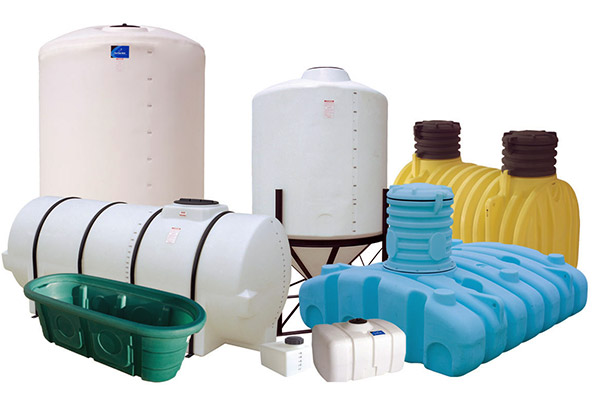
3. Extrusion Blow Molding
What is extrusion blow molding?
Molten plastic in the form of a large droplet, called a parison, is placed into a two-piece clamshell mold.
After the mold closes, the parison is inflated like a balloon until it fills the empty cavity. Because the walls of the mold are water-cooled, the plastic quickly solidifies and the part can be ejected.
What are the pros and cons?
This is the most common way to make thin-walled, inexpensive containers like disposable drinking cups or bottles. It’s fast and the tools are easy to make, but the parts cannot be very complex or made with high precision.
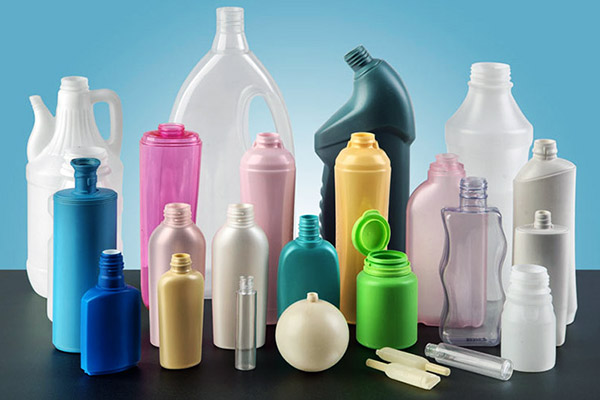
4. Injection Blow Molding
What is injection blow molding?
During injection blow molding, gas pressure is used to force the molten resin into a mold cavity.
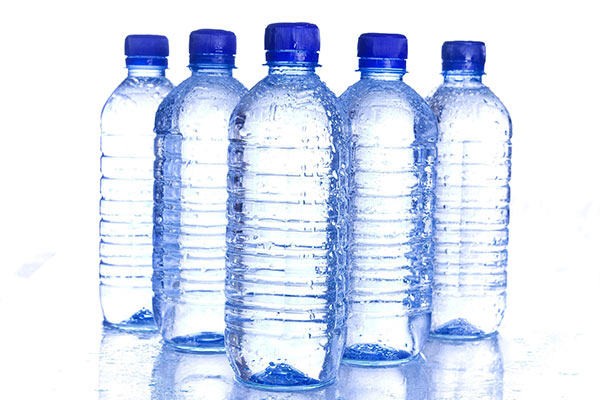
What are the pros and cons?
The process is easily controlled and repeatable and is commonly used for transparent plastic drinking bottles. It makes for excellent surface quality but it’s not ideal for thin walls.
PET (polyethylene terephthalate) or PEEK (polyether-ether-ketone) are the typical resin choices for drinking bottles, due to their clarity and durability, and because they’re rated as safe for consumables. They’re also easily recycled.
5. Reaction Injection Molding (RIM)
What is reaction injection molding?
RIM is most often used in the automotive industry because it produces lightweight parts that have a rigid skin. This skin is easily painted to make body panels, dashboards, and other car parts. However, thermoforming plastics won’t work in this process. Instead, this process requires thermosetting plastic.
Thermosetting plastics undergo an irreversible chemical reaction inside the mold. This usually causes them to expand like foam, filling a mold cavity. When the chemical reaction is done the plastic sets into its final form.
What are the pros and cons?
Tooling costs for prototypes are relatively low, while production tooling is moderately expensive. The main cost is in the material, bearing in mind that the resulting part must always be finished, usually with a urethane-based gel coat or by painting. Therefore, the process is more labor intensive which increases the piece price.

6. Vacuum casting
What is vacuum casting?
Vacuum casting is a great choice for making a small number of high-quality rapid prototypes without a big investment in tools or material.
A master model of any rigid solid (often this is a 3D printed master pattern) is placed into a sealed box, which is then filled with a flexible urethane or silicone. When the master is removed, a cavity is formed inside the mold that can now be filled with plastic resin to form a copy of the original. Vacuum pressure is used to pull air out of the mold so that it fills completely with no air bubbles.
In this process, the surface finish quality and detail are excellent and pourable resins can imitate many engineering grades of plastic. Notice also that the pourable liquid resins aren’t quite the same as their counterparts used in plastic injection molding. In the former case, resins are solidified by a chemical reaction with a hardening agent, not by cooling down.
What are the pros and cons?
Polyurethane vacuum casting is fast because a silicone mold tool can be made in just a few days. It requires a much smaller initial investment, and the fidelity of the copies is excellent – even capturing fine grain texture.
The drawback is that the tools are fragile, and they react with the chemicals in the resin and must be replaced after about 20 copies or so.
7. Thermoforming
What is thermoforming?
This is a type of vacuum forming, where a thin or thick gauge plastic sheet is placed over a die, heated to a temperature that allows the material to become pliable, then stretched over the surface of the die while vacuum pressure pulls the sheet down and into its final shape.
This process can also be done with simple dies and very basic equipment. It’s often employed with samples and prototypes of thin-walled, hollow-bodied parts.
In industry, it’s used for plastic cups, lids, boxes, and plastic clamshell packaging, as well as for auto body parts in thicker gauge material. Only thermoforming plastics are suitable for this process, not thermosets, because the material needs to soften under heat and then become rigid again when it cools.
What are the pros and cons?
Thermoforming is very cost-effective and can be done with simple equipment. In fact, even home shops and DIY people use thermoforming to make models and prototypes. The process is also safe because there are no bad chemicals or high temperatures involved.
However, it’s only suitable for making simple shapes, and once the material cools it will shrink quite a bit so it’s not a high-precision application. Also, the relatively thin plastic stock is needed, although many sheets can be laminated together after forming to make a more rigid final product.
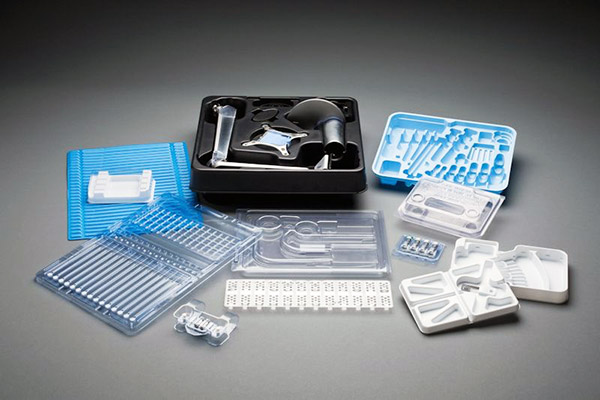
8. Compression Molding
What is compression molding?
The raw material, usually some type of elastomer or polyurethane, is pre-heated and placed inside the open cavity of a die. A cap or plug is used to close the die and apply heat and pressure, causing the plastic to cure. This process is great for rubber keypad switches, gaskets, O-rings, and other soft, pliable thin-walled parts.
What are the pros and cons?
It’s relatively inexpensive and wastes little material, although controlling the consistency of the finished piece can be difficult and much care needs to be taken in the preparation of the initial mold design. Making a compression molding die is much easier and less expensive than a plastic injection mold tool, and relatively simple equipment can be used for this plastic manufacturing process.
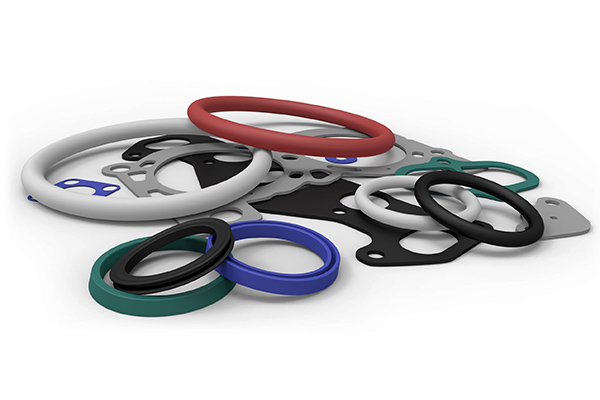
What Materials Are Used In Plastic Manufacturing?
There are over 10,000 different types of plastic resins commercially available, each of them specially formulated to achieve very specific chemical and mechanical properties.
Although we can’t possibly list them all, there are ten major groups that account for the vast majority of industrial and consumer products. They are: Polyamide, Acrylic, Polycarbonate, POM, Polystyrene, ABS, Polypropylene, Polyethylene, Polyurethane, and Thermoplastic Rubber.
Plastic manufacturers can also add glass or carbon fibers to increase strength and stiffness, or mix two or more resins together to combine their properties. These plastic types provide a full range of benefits including strength, impact resistance, flexibility, chemical resistance, light weight, toughness, and optical clarity.
Ready to start your project? Contact an expert about your project.
If you liked reading this article, we recommend the following content:

